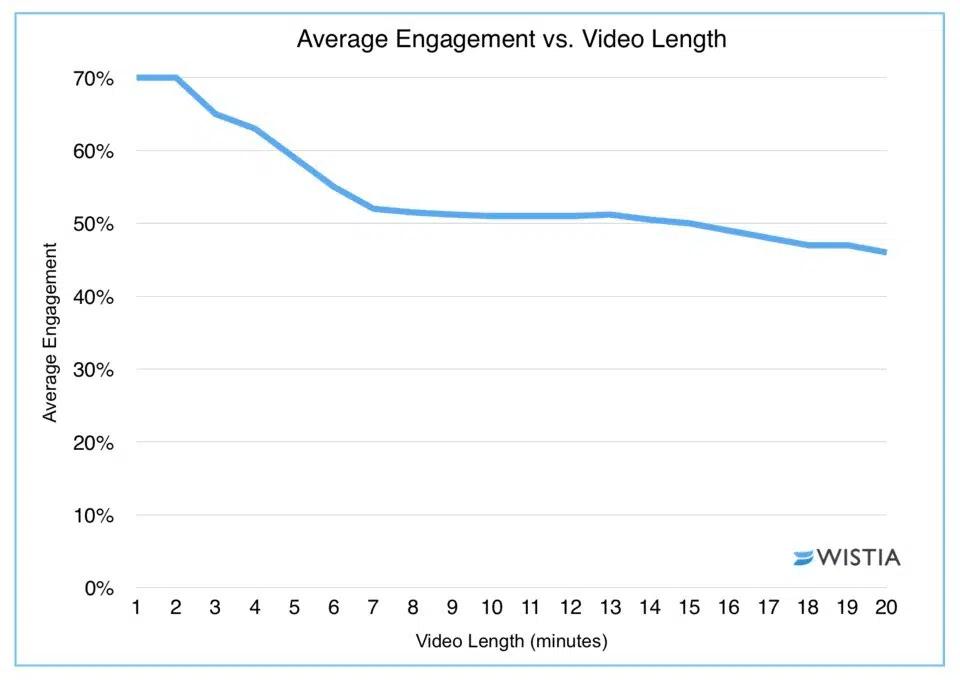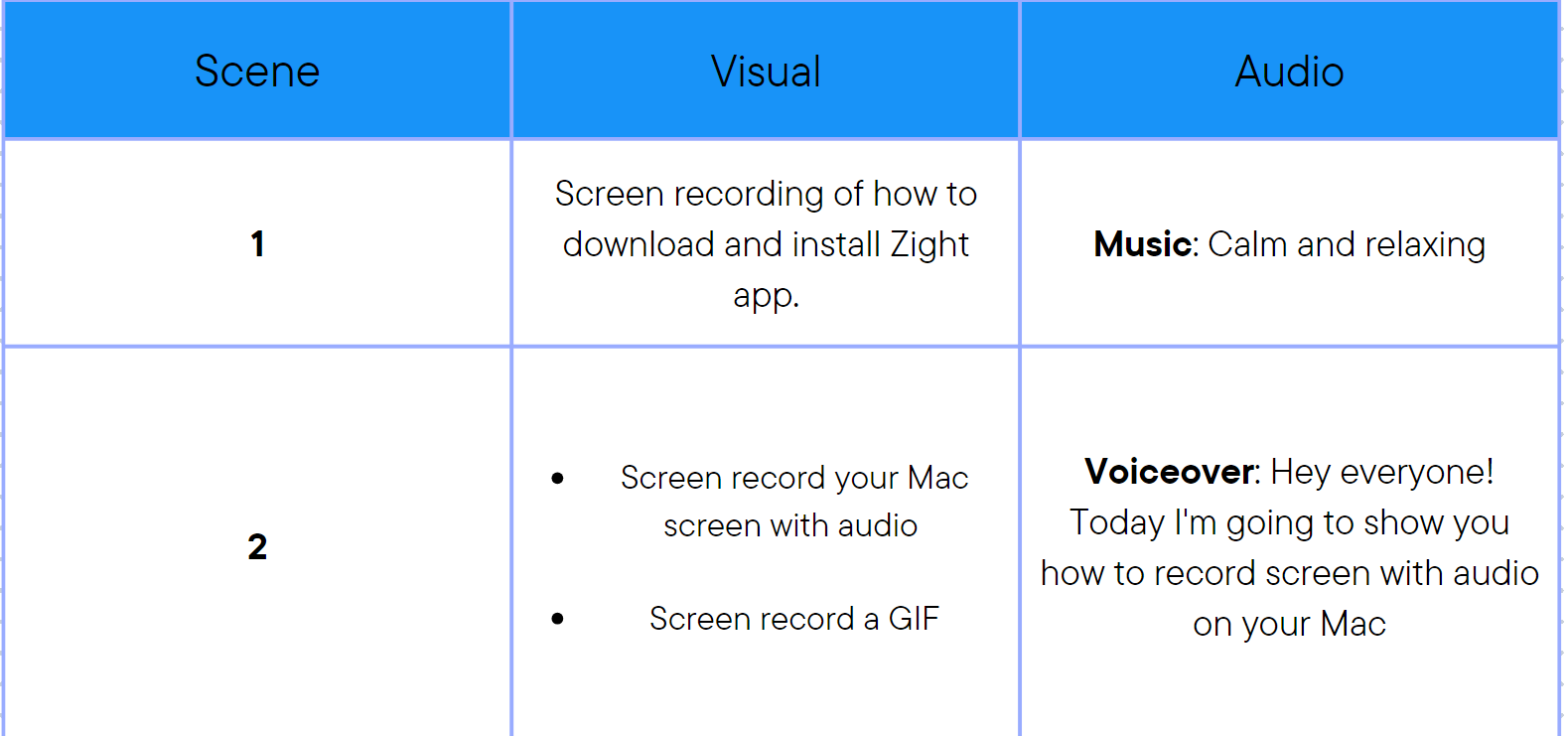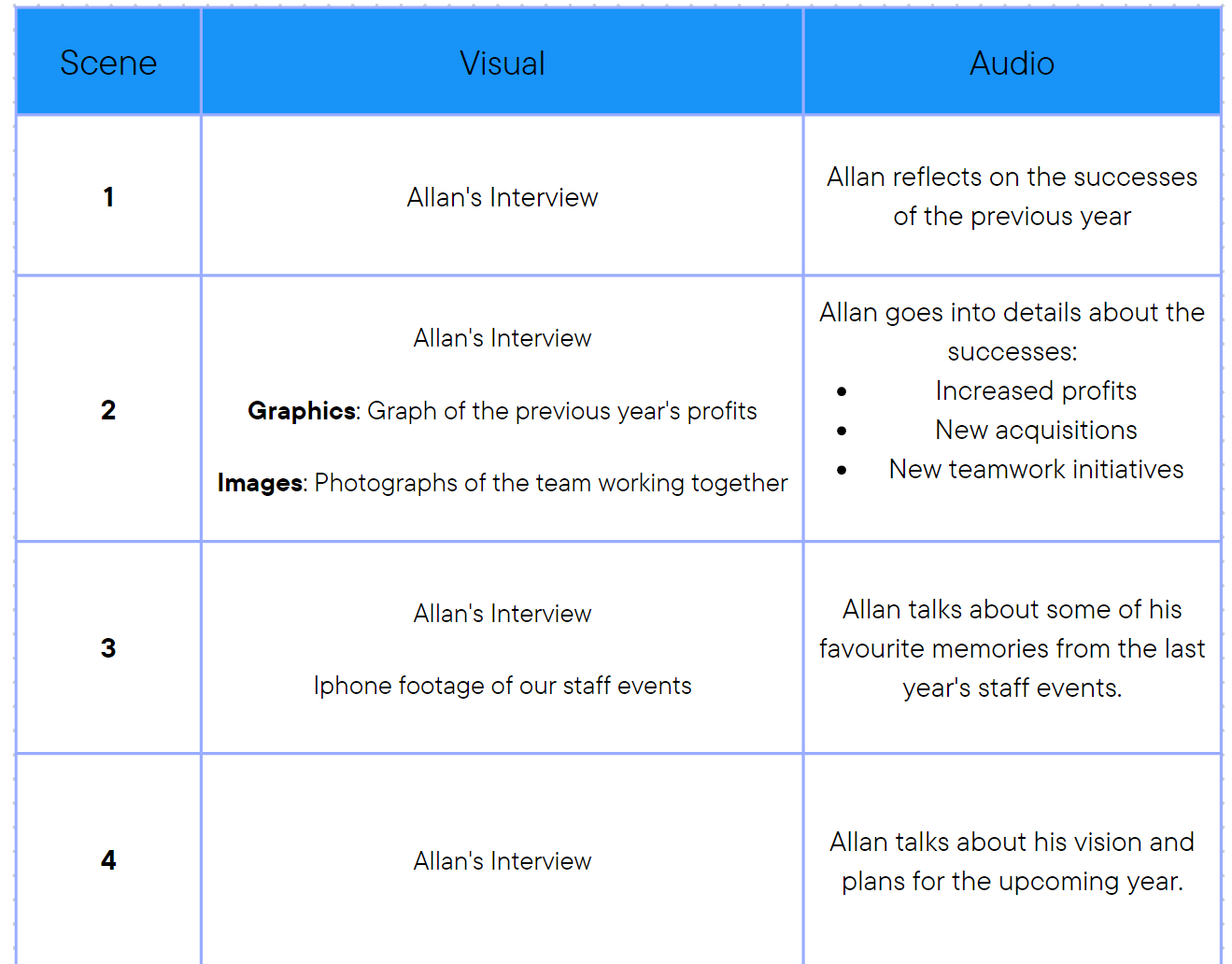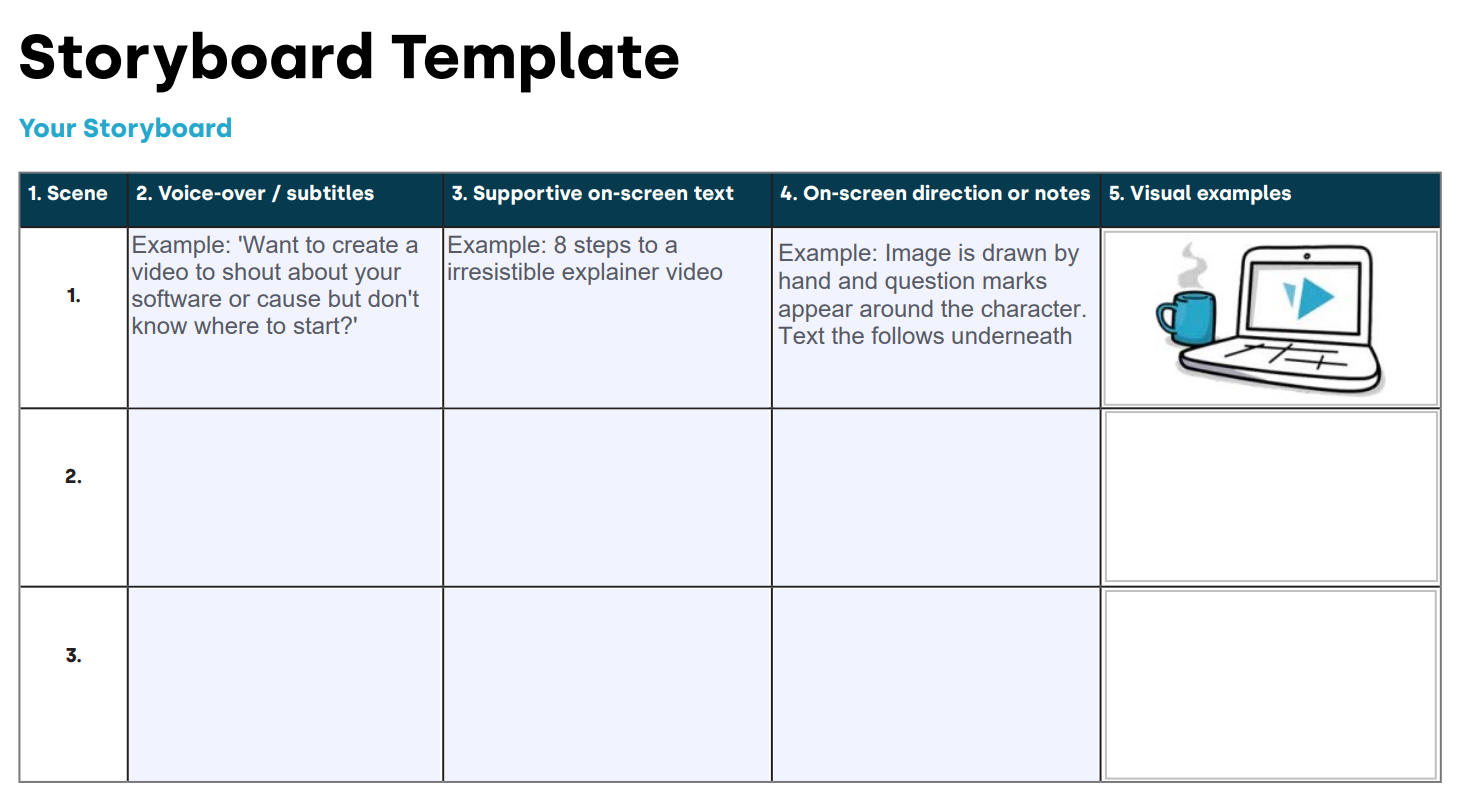A blank page, an ambitious goal, and the pressure to create a winning video script. We’ve all been there – the moment when endless possibilities meet the need for precision. With countless ideas swirling around, it’s easy to feel overwhelmed.
So, where do you begin? How do you sift through many ideas and filter them to create a powerful script? Also, how can you channel this creative storm into a script that genuinely captivates? That’s where the power of Zight comes into play. Our innovative platform seamlessly integrates into your scriptwriting process, making it easier than ever to sift through ideas and transform them into compelling video content.
- Record your screen with audio and webcam
- Annotate with arrows, lines, and blur
- Instantly share with a link or upload to YouTube or Vimeo
This guide will be useful if you find yourself staring at a blank page but also provide you with a valuable tool – our free video script templates – to help you confidently navigate this creative landscape. Let’s dive in!
What is a Video Script?
Video scripts act as the roadmap for your video project, guiding visual and audio elements to create a cohesive and engaging experience. They ensure your message is clear, concise, and relevant to your target audience. A good video script can make all the difference between an engaging, informative video and one that falls flat.
A script outlines your video details, such as the characters, setting, on-screen visuals, dialogue or voice-over, music, and many more.
The main difference between a video script and any other written communication document is that its audience never reads a script. Therefore, a script is not a finished product but can be described as a blueprint for a finished product.
Elements of an Effective Video Script
The elements of an effective script are crucial to creating compelling and engaging content. No matter the type of video, the key elements to consider when crafting your own video script include:
1. Content Idea
Your content idea is the fundamental concept or topic that your script revolves around. It’s the seed from which your entire script grows. Your choice of content idea significantly impacts various aspects of your script, including its scope, style, and tone.
For example, if you’re writing a video script for a software tutorial, your video content idea might be “How to Use XYZ Software Efficiently.” This idea guides what information you’ll include, how you’ll present it, and the overall theme of your script.
2. Purpose
The purpose of your script for video defines its primary goal. It’s the driving force behind why you’re creating the video.
Your purpose could be to inform your audience about a new software feature, entertain them with a humorous skit related to your product, educate them on a complex topic, or persuade them to take a specific action, like subscribing to your software.
The purpose shapes the direction of your script, the style in which it’s written, and the platform where it will be shared.
3. Video Type
The type of video you’re creating determines the script’s structure and pacing. Different video types require distinct approaches. For instance, an explainer video aims to simplify a complex concept, so the script should follow a clear, step-by-step structure.
On the other hand, a testimonial video relies on authentic customer experiences so that the script may focus on real-life stories and emotions. The desired video type directs the content and flow of your script.
4. Style
Your script’s style sets the overall tone and mood of your video. Whether you opt for a formal, professional style or a more casual and friendly approach, it must resonate with your target audience’s preferences. A formal style might be appropriate if your software targets a corporate audience.
However, a more casual and relatable style may work better if your software is for creative individuals. The chosen style influences your script’s language, dialogue, and rhythm.
5. Tone
The tone of your script plays a vital role in effectively communicating your message. It’s determined by factors like your audience’s demographics and psychographics, the chosen style, and the platform where the video will be shared.
For instance, a tutorial video aimed at professionals may adopt a serious and informative tone. In contrast, a promotional video for a youth-oriented product may employ a lively and enthusiastic tone. Adapting the tone appropriately ensures that your video connects with your viewers emotionally.
6. Pace
The pace of your video is intricately linked to the script’s nature and the platform it will be displayed on. A short social media script must convey information swiftly, often with concise dialogue and quick transitions.
In contrast, an in-depth educational video can have a more measured pace, allowing for detailed explanations and examples. The selected platform and the typical viewer’s attention span inform the ideal pacing of your script.
Why Do You Need a Video Script?
Although it might be tempting to skip video script writing and prefer “winging it,” it’s not the ideal way to write a good script. Some of the reasons you should plan your video by writing a video script include:
1. Clarity and Precision

A video script is the backbone for achieving clarity and precision in your content. It’s your opportunity to craft a carefully thought-out narrative, ensuring your message is concise and without ambiguity.
In today’s fast-paced digital landscape, where attention spans are short, a clear script with no unnecessary words can distinguish between engaging your audience and losing their interest.
2. Seamless Storytelling
Compelling storytelling is at the heart of many successful videos. A well-structured script provides the roadmap for weaving a compelling narrative that captivates viewers. It guides you in introducing characters, building tension, and delivering a satisfying resolution, resulting in a story that resonates with your audience.
3. Audience Connection
Tailoring your content to your audience is crucial. A script allows you to infuse your video with elements that resonate with your viewers, such as addressing their pain points or aspirations.
Consider Red Bull’s marketing videos, where high-energy visuals and dynamic script content resonate with their adventure-seeking audience.
4. Visual and Audio Harmony
Videos are a multimedia experience, incorporating visuals, audio elements, and sometimes even text. A script helps orchestrate the seamless integration of these elements, ensuring that they work together harmoniously to convey your message.
An explainer video script will ensure the visuals, animations, music, and sound effects complement the narrative, enhancing your audience’s overall experience. Luckily, Zight is the perfect way to easily harmonize the overlay sound effects, voice-overs, and music annotations onto your visuals.
5. Effective Call to Action (CTA)
A strategically placed CTA is essential if your video aims to persuade viewers to take specific actions, such as signing up for a service or purchasing. Your script guides the placement and wording of the CTA, ensuring it aligns with your video’s goals and prompts viewers to act.
For instance, from a product review video, a good script-based CTA can prompt your audience to visit your website and explore the product further.
6. Consistency and Quality
For those embarking on a series of videos or maintaining a consistent brand presence, a script serves as a tool for maintaining content quality and consistency. It provides a framework to adhere to your brand’s messaging, tone, and style, ensuring that every video aligns with your brand’s identity.
Suppose your company creates training videos. A consistent training video script style will ensure the learners have a familiar experience across all the modules.
What are the Video Script Formats?
Different video styles demand distinct script formats. Choosing the right video format will help you set your video’s goals and scenes. However, there is no YouTube video script template because YouTube videos are so diverse. Here’s an overview of the four most common formats:
1. The Audio Visual Script

Audio-visual video scripts are perfect for recording anything where the video needs to be guided by the audio, like in:
- Tutorials
- Product tours
- How to videos
- User-generated video content
- A day-in-the-life videos
To know how to write a video script using this format, you should add all the details of the scene and the shot, like any close-ups, actions, or camera movements. You must also add what your audience will listen to, such as sound effects, voice-overs, or background music.
2. The Structure Script

A structured script video format focuses on the organization of flow and structure of a video. It outlines the primary scenes or sections, content, and transitions between them. However, it doesn’t get deep into the dialogue or specific visual elements but provides a high level of the video’s structure.
It doesn’t focus on the exact words to say but rather on how to arrange your ideas. It’s slightly less detailed than a script with precise words and actions.
It’s perfect for videos where the emphasis is on storytelling and visual storytelling, such as:
- Documentaries
- Case study video
- Educational video content
- Event recap video
- Narrative driven videos
3. The Interview Script

The interview format is tailored for videos that involve interviews or conversations. It includes questions for the interviewer and anticipated responses or talking points for the interviewee. It ensures that the conversation stays on track and covers the desired topics. Some perfect scenarios are:
- Panel discussions
- Interview videos
- Testimonial videos
- Q&A sessions
4. The Storyboard

A storyboard script combines sketches or illustrations with descriptions of what should happen in each scene. It’s often used in animation or highly visual videos to plan and visualize the sequence of events such as:
- Scenes that need precise visual coordination
- Animated videos
- Explainer videos
- Webinar/online event videos
- Personalized video
- Commercials
Video Script Templates
As promised, we’re providing free video script templates to make your scriptwriting process smoother. Video script templates are designed to make your scriptwriting process more efficient while maintaining a professional and visually appealing format.
We recommend Zight’s video templates for several reasons:
- With Zight’s Audio Visual Script template, you can effortlessly plan your video’s visual and auditory elements, resulting in a seamless viewer experience.
- Zight’s template for Structure Script format ensures that your content stays on track, making complex topics easier to understand.
- Zight’s Interview Script template streamlines the interview process and helps maintain a focused and productive conversation, ensuring that essential topics are covered effectively.
- Zight’s Storyboard template combines sketches or illustrations with scene descriptions, enabling you to plan the visual sequence effectively. It’s a powerful tool for visual storytelling, ensuring that each scene is well-coordinated and aligns with your video’s message.
You will find a free video script template that fits the contents of your script. Download these video scripts for free here.
How to Craft a Great Video Script
Crafting a compelling video script involves several key steps that can make all the difference in engaging your audience and conveying your message. Let’s dive into the step-by-step instructions:
1. Create a Brief
The brief is the foundational step in creating a video script. This is where you’ll set the stage for your video project. Your brief should answer such critical questions:
- Who is your target audience? Understanding your audience is essential for tailoring your message.
- What is your video’s purpose? Is it to inform, entertain, educate, or persuade?
- What do you want your audience to learn or take away from the video? Define your key message.
- How do you want your audience to feel? Emotions are powerful in video content.
2. Write an Outline
Once you have a clear goal from your brief, create an outline for your script. This outline will serve as the backbone of your script, helping you structure your content effectively. Follow best practices:
- Start with a video hook to grab your viewers’ attention.
- Re-engage your audience to maintain their interest.
- Set up the story and lead toward the video’s purpose.
- Bring back the re-engagement and introduce a pattern to retain attention.
- Reach the climax, the peak of your story, and your goal.
- Wrap up with a call-to-action and tie up any loose ends.
3. Write a Video Script
Now, it’s time to write a video script. Focus on crafting engaging content and building each section, maintaining your goal and message clarity. Tips to enhance your script include:
- Write conversationally, as if you’re speaking directly to your audience.
- Be specific and detailed, adding lines, types of shots, or any visual elements where necessary.
- Always keep your target audience in mind and write in a way that resonates with them.
Script writing for video in sections allows you to address all the necessary points to convey your message effectively. Remember, detail is key, especially when you include a call-to-action at the end, which can vary from subscribing to supporting a cause.
4. Include Visual and Audio Elements
You can do this by:
- Enhancing Engagement: Visual and audio elements are the spices that add flavor to your script. Music and sound effects set the mood, while visuals like sets, costumes, and B-rolls add depth and context.
- Mapping Elements: Clearly define which visual and audio elements are required for each script section. This ensures a seamless integration during filming and editing.
- Visual Storytelling: Visuals should complement the narrative. For example, if you’re explaining a product’s features, use screen recordings or close-up shots to demonstrate visually.
5. Edit Your Script
Errors can sometimes evade detection during the writing video script phase. Once you’ve wrapped up your initial draft, set aside enough time for thorough edits and revisions.
To identify any dialogue that sounds awkward or transitions that appear abrupt, consider either reading your script aloud or enrolling someone to read it to you. If something strikes you as unnatural, it’s a good bet that it won’t resonate well in the final video.
Depending on the social media platform where you plan to showcase your video, shorter videos may deliver superior performance compared to longer ones.
Conclusion on Writing a Video Script
In video creation, the script is your North Star, guiding your content from inception to screen. You’ve unlocked the art of crafting a great video script by now. Remember, every word you choose, and scene you describe contribute to the magic that unfolds on camera.
And here’s the extra magic trick – Zight. With its powerful features and intuitive interface, Zight takes your scriptwriting process to the next level. It streamlines collaboration, enhances creativity, and ensures your script is as polished as possible. With Zight, you’re crafting an unforgettable experience, not just writing a script.
Whether it’s a tutorial, an emotional journey, or a dynamic promotion, your script, supercharged by Zight, will shape the narrative that captivates your audience and leaves a lasting impression. Happy scriptwriting!
